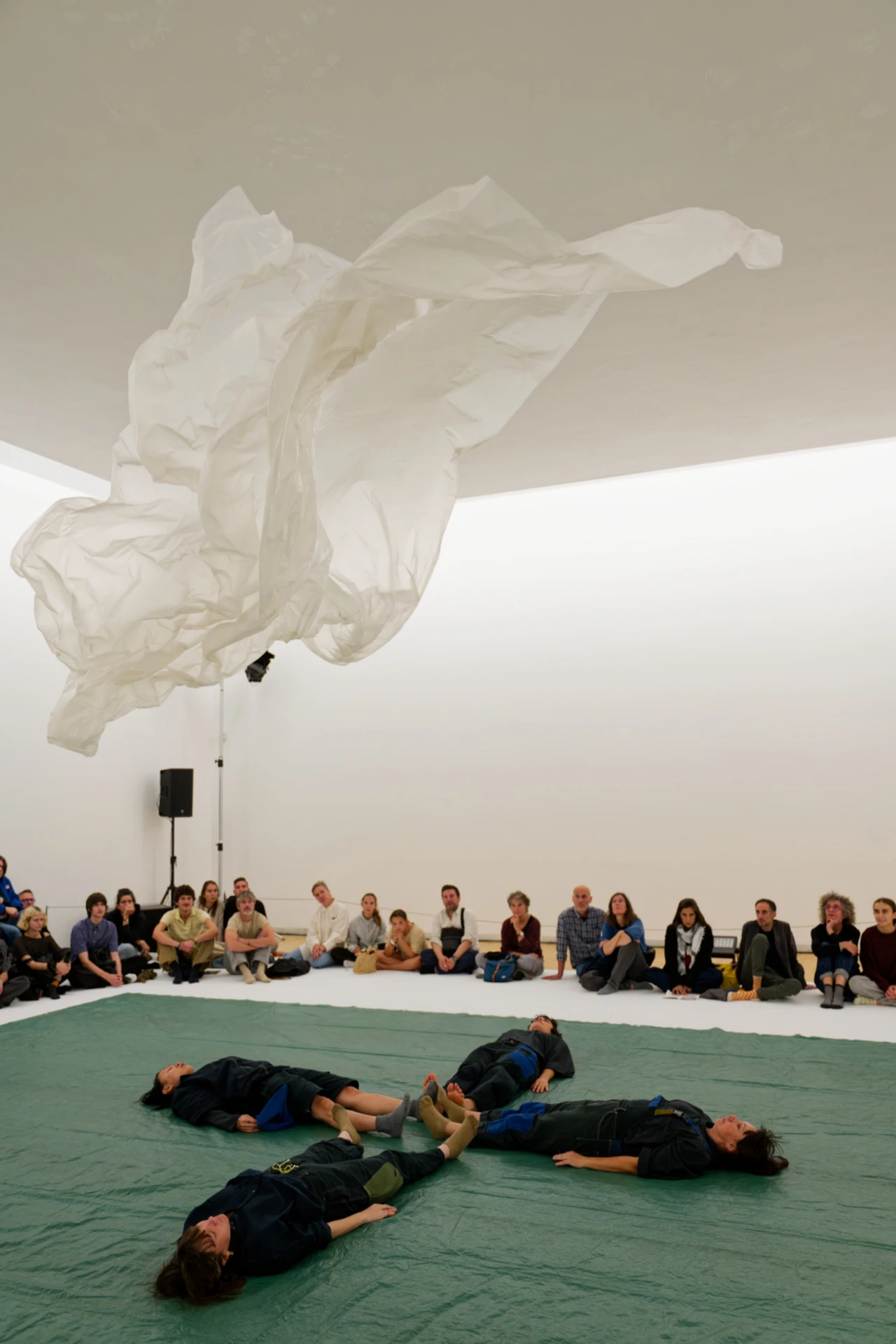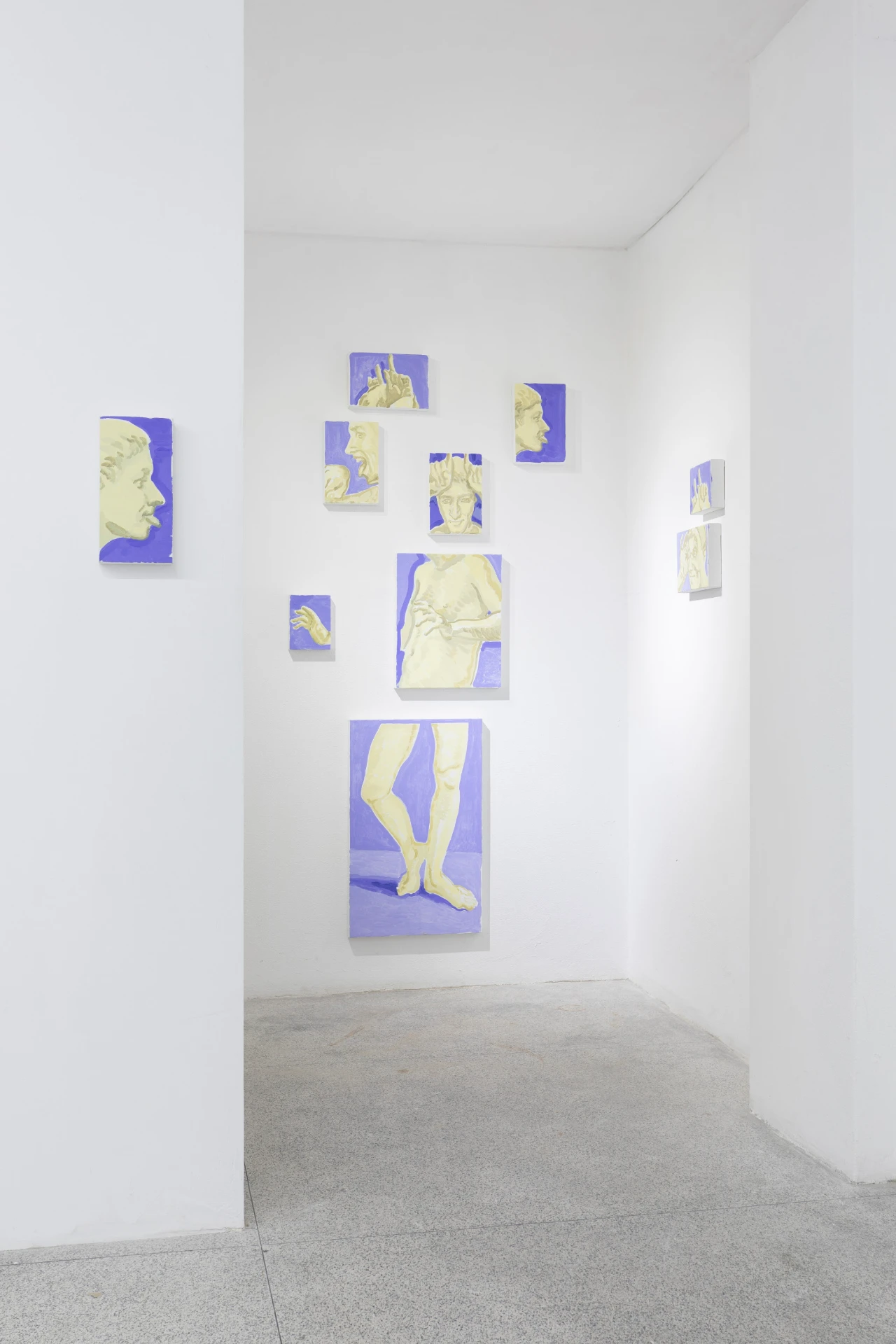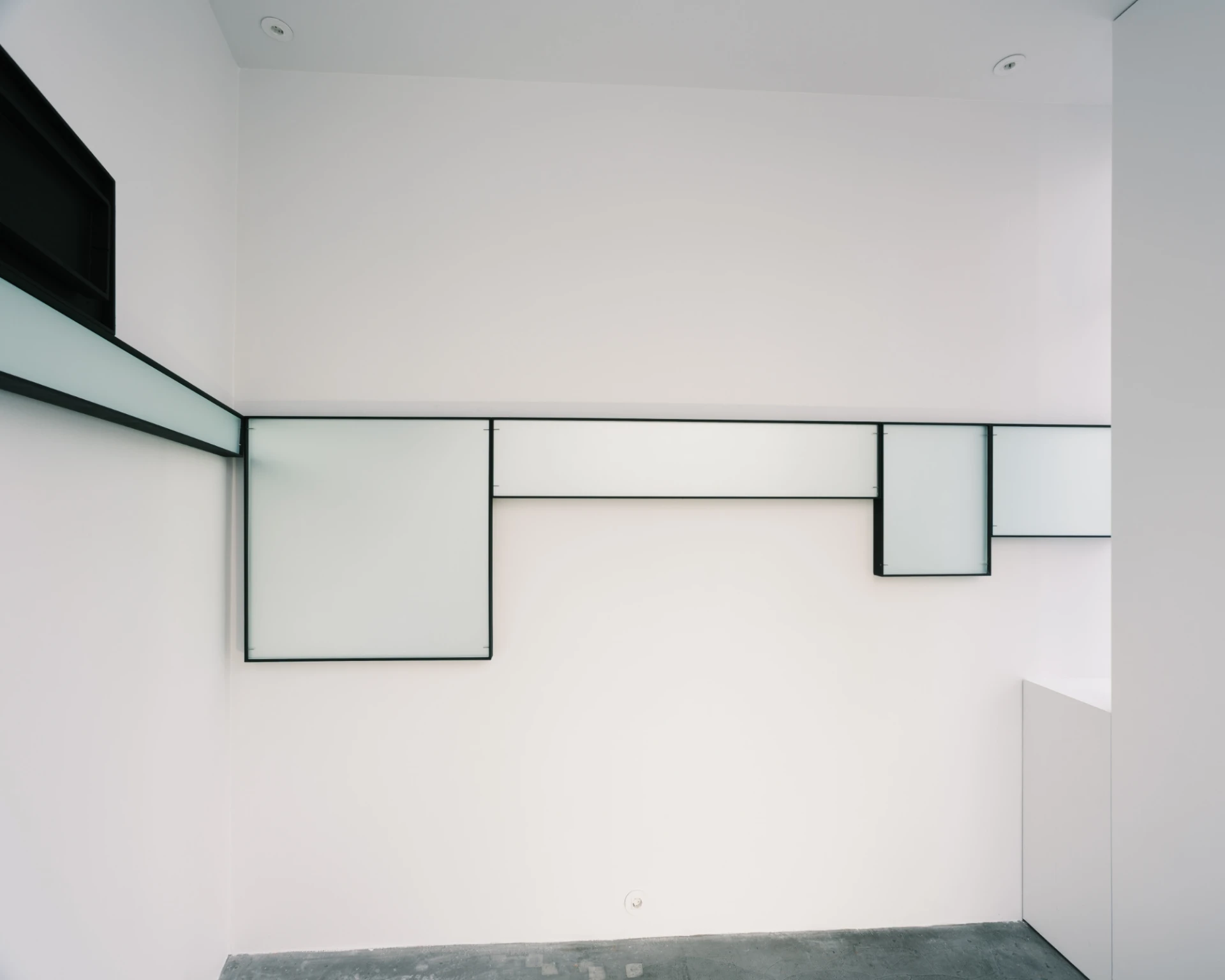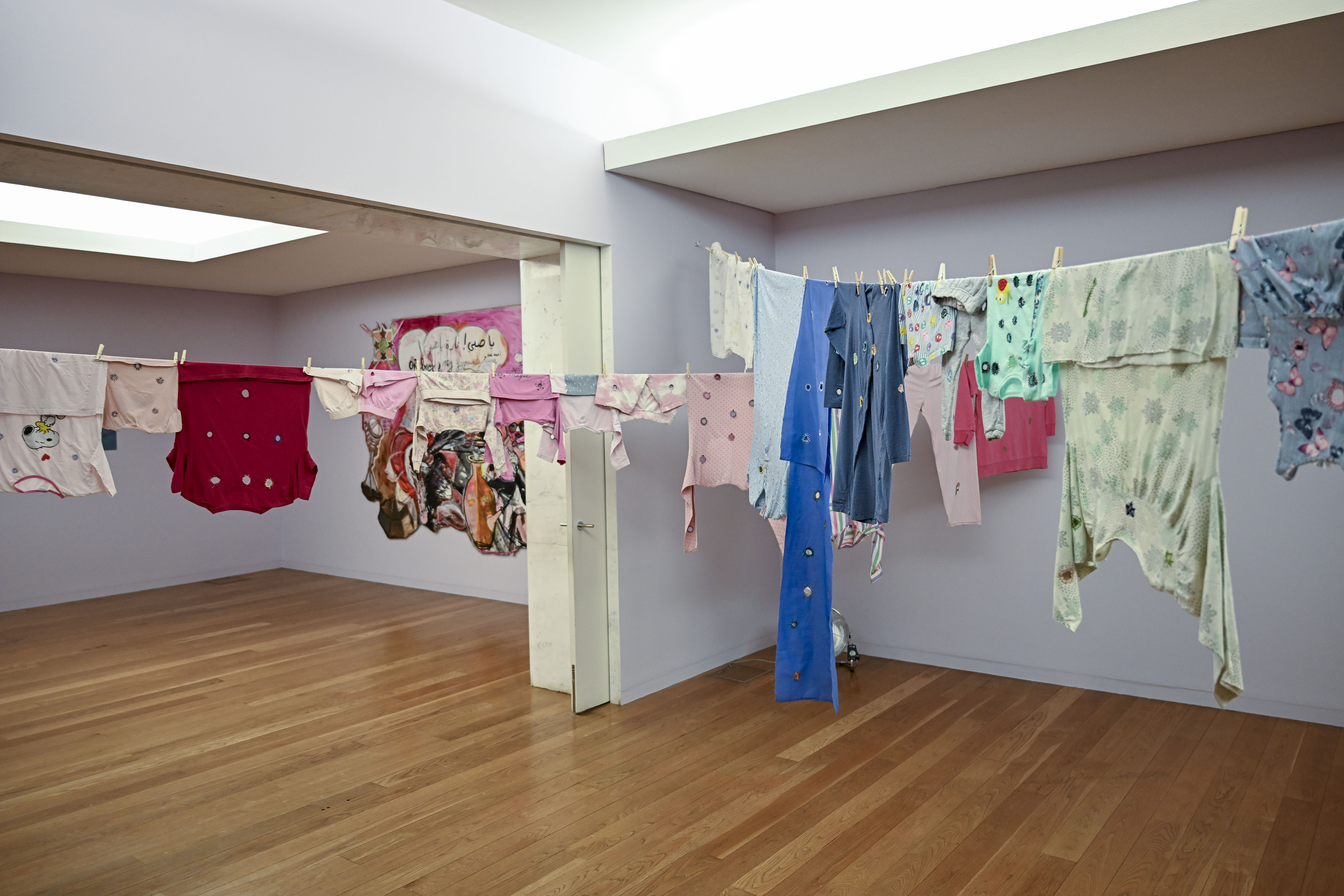article
drawing of a long Illuminated house. with annex, by Carlos Nogueira
At this point, we are heading to the Architecture Gallery to see Carlos Nogueira´s work, "drawing of a long illuminated house. with annex". We arrive at the correct number, 99, check the sign, and approach the door. It's locked. Naturally, we try the handle or look for a doorbell. Nothing. We peer through the windows and look around. The door, which serves as an entrance, fails in its purpose.
That’s when we realize: the work is there, right in front of us. Visible, clear, through the display case. The glass reveals it entirely. Or almost. Because glass isn't just a transparent surface. It's also a mirror, a membrane, a filter. It reflects what's happening on the observer's side and, simultaneously, allows a glimpse of what's happening inside.
Still, standing before the door, a doubt may arise: did we really see the work? You might think you didn't see the work simply because you didn't enter the space that holds it, that displays it. But such hesitation forces you to reconsider, with some irony, what it means to see. Indeed, what conditions are necessary for you to say, without fear, "I saw"? Is it necessary to enter the space where the work is located to see it? Or is it sometimes the very act of entering that prevents you from seeing what the space reveals in its relationship to the outside?
drawing of a long illuminated house. with annex presents itself as a set of black lines and translucent planes that cut through the gallery's white walls. Fixed at the intersection of two walls, this structure suggests the plan of a house, but rejects any illusion of completeness. It is not about representing a house, but about interrupting its construction at the most elementary moment: the primordial, almost skeletal form of a space to come. A base that only gains thickness in its confrontation with its surroundings. Therefore, it projects toward the street, toward the position of the body looking at it from outside. It is at these intersections that Carlos Nogueira´s house rises: between inside and outside, between what is delimited and what remains open, between what infiltrates inward and what, from within, escapes to the outside. What exists here is more of a condition than a construction: the suggestion of a possible space, or the minimum necessary for something else to emerge.
What matters are the intermediate spaces that form between what exists, Erpenbeck reminds us in Kairos. It is in these spaces that this house is sustained. Its in-betweenness is activated above all by the way it opens to the outside: the glass acts as a membrane between the work and the city. Seen from the outside, the gallery ceases to be an isolated space for contemplation. The reflection of the street infiltrates the work, contaminating it with the visual noise of the city.
But the relationship between the work and the exterior isn't static. It changes with the light. At night, the gallery's lighting accentuates the black structure and highlights the translucent planes. They aren't illuminated as standalone elements, but rather integrated into a light that adds thickness. During the day, this density is lost and the city rediscovers itself in the glass. There isn't a single, fixed image: there are two ways of seeing, and time decides which one prevails.
Perhaps, in this case, entering is not the only way to see. And even if you return, just to make sure the door is still closed, don't fret: not all entrances to a house are through a door.
drawing of a long illuminated house. with annex, by Carlos Nogueira, is on display at the Architecture Gallery in Porto until September 27th.
BIOGRAPHY
Débora Valeixo Rana (b. 1990, Lisbon, Portugal) is a philosophy teacher living in Porto. She graduated in Philosophy from the Faculty of Letters of the University of Porto (2011) and has a Master's degree in Teaching Philosophy in Secondary Education (2019). Her academic and professional career reflects a deep interest in the intersection between Art and Philosophy, a dialogue that led her, in 2022, to take up a master's degree in Artistic Studies and Art Criticism at the Faculty of Fine Arts of the University of Porto.
ADVERTISING
Previous
article
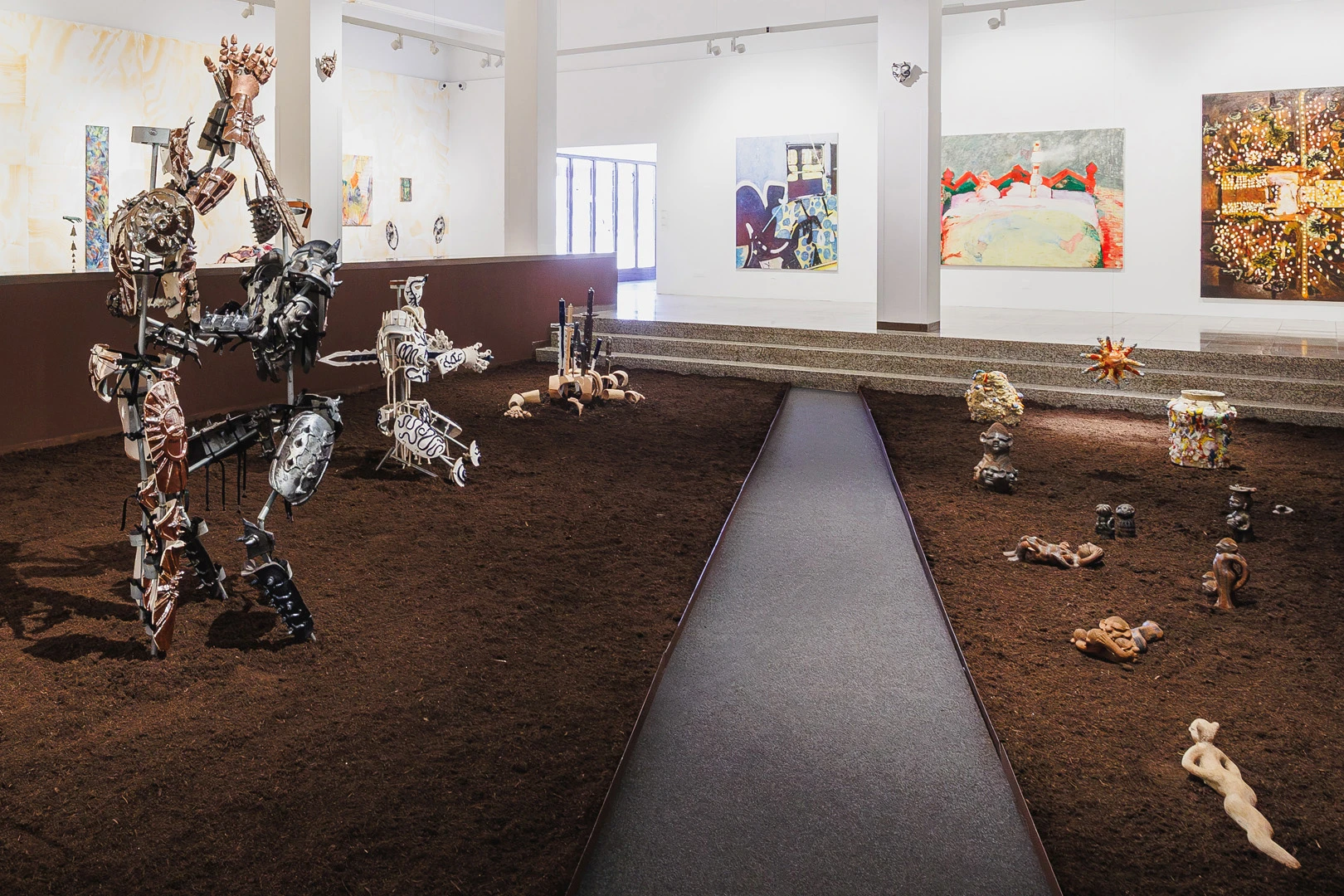
03 Sep 2025
About the Bienal de Arte Contemporânea da Maia 2025
By Mariana Machado
Next
article

08 Sep 2025
Do Teatro ao Retrato and Allez Paris, at the Lisbon Municipal Archive
By João Pedro Soares
Related Posts
